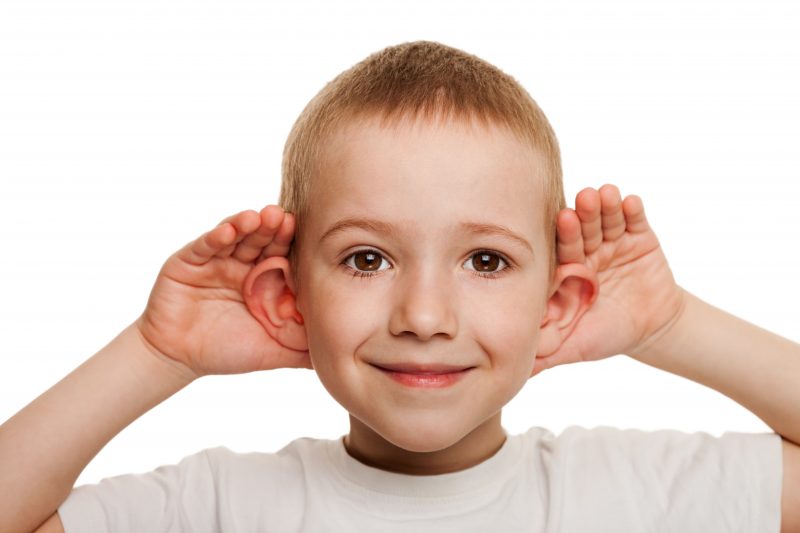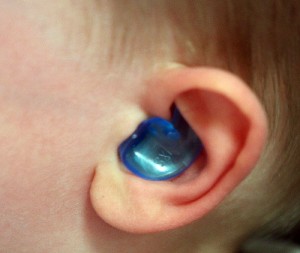
Ear tube insertion is the most common childhood surgery performed with anesthesia in this country, according to American Academy of Otolaryngology.
“Kids are more susceptible to ear infections because their Eustachian tubes are narrower and more horizontally positioned than adults,” said Dr. Anton Milo, community/regional pediatric otolaryngology director of Akron Children’s Ear, Nose and Throat Center. “Their normal ear anatomy can cause poor drainage and ventilation, leading to fluid retention and an environment ripe for infections.”
In most cases, ear tube insertion is very successful in reducing ear infections and other middle ear problems in children.
If your child recently had ear tubes placed, you probably have a lot of questions. What happens when ear tubes fall out or move? When should they fall out? What if there’s mucus, blood or other drainage and leakage issues?
Get answers to the most-asked questions Dr. Milo receives from parents about ear tubes. You can also get an inside peek at what to expect by checking out live updates from a surgery.

Dr. Anton Milo, community/regional pediatric otolaryngology director at Akron Children’s ENT Center
Q1: Is it ok when a tube falls out of the ear? How long does it take?
A: Yes, that’s normal. Most tubes fall out on their own within 6 to 12 months.
Q2: What causes ear tubes to fall out?
A: The ear’s natural healing process causes the tube to fall out. As the ear heals, it tries to close the hole made by the tube. It squeezes that tube out and it falls out of the eardrum. Rarely does an ENT physician have to go in and take the tube out. They fall out 90% of the time within two years.
Q3: How can I tell when the ear tubes have fallen out?
A: A lot of times a parent can’t tell when the ear tube falls out because it can get stuck in a little bit of wax in the ear canal. That’s why an ENT physician checks the child’s ears every 4 – 6 months until the tube falls out. Sometimes the physician will see it sitting in wax in the ear canal and cleans it out in the office.
Q4: What happens if the tubes in the ear move?
A: It does move as it extrudes, but a patient can’t feel it. The tube is placed in the front of the eardrum (anterior). As the ear heals, it rotates that tube around to the back edge and it tips and falls away.
Q5: What do I do when the ear tubes fall out?
A: About 80% of patients will improve with a set of tubes. There’s no way to predict which child will have reoccurring ear infections. If a child needs a second set of tubes, most likely your ENT physician will recommend taking the adenoids out or treating underlying allergies. That gives the child a higher chance of curing ear infections.
Q6: What if an ear tube is lying in the ear canal?
A: No big deal. That’s usually where it is found, and then gets cleaned out by an ENT physician. Patients can’t tell it’s there; it’s like having wax in your ear, basically.
Q7: What happens if my child’s ear tubes fall in the ear rather than in the canal?
A: That’s called a tube that intrudes, not extrudes. It depends on where it is and whether it’s bothering the child. If it’s not bothering the child, you don’t have to do anything. It’s sterile in there and it won’t harm the child. However, it can be surgically removed.
Q8: Should my child’s ear hurt when the tube falls out?
A: No. There should be no pain, unless the child is getting infections again.
Q9: Can you get water in your ears once your tubes have fallen out?
A: Patients can get their ears wet as long as the eardrum has healed. Sometimes there are cases where the tubes extrude and the eardrum doesn’t heal, so there’s a hole or perforation. It is the ear’s way of staying healthy. Air ventilates through that tiny hole where the tube used to be. The ENT physician will watch it and treat it as if it were a tube. It must be kept dry. A lot of times it will close up on its own.
Q10: Is it safe to bathe after ear tubes fall out?
A: Yes, as long as it’s healed. Before it heals, the child may wear earplugs to help protect the ear.
Q11: Can toddlers touch their ears after ear tubes?
A: Yes, they can. They will not get their finger deep enough to harm anything.
Q12: Is ear tube surgery safe?
A: Ear tube surgery is an extremely common and safe procedure with minimal complications.
Q13: What percent of kids get ear tubes?
A: Ear infections are the most common reason children visit a pediatrician. If a child suffers from chronic ear infections, ear tubes may be recommended. It’s estimated nearly 7% of children get ear tubes before they reach age 3, according to the American Academy of Otolaryngology.
Q14: Can eardrums grow around tubes?
A: Yes, but it’s very rare.
Q15: Do kids grow out of needing ear tubes?
A: Yes, most of the time.
Q16: When do toddlers’ ear tubes mature?
A: About 6 to 7 years of age.
Q17: At what age can my child get tubes in his ears?
A: Kids can receive ear tubes any time after 4 months of age.
Q18: If I can see a tube in my child’s ear, can I pull it out?
A: No. That can cause further complications.
Q19: How does the mucus drain from my ears?
A: A patient really shouldn’t have mucus. Instead, they should have air flowing in the ear. If there’s mucus, it’s a sign of lack of ventilation in the middle ear. That’s how ear infections/problems develop in kids.
Q20: Why is blood coming from the ear with ear tubes?
A: Usually, it’s a sign of infection. Infections can be bloody, or emit pus or clear drainage that looks almost waxy. Eardrops can treat the infection.
Q21: Can my child still get ear infections while she has tubes?
A: Yes. Children with tubes tend to have fewer infections, but tubes don’t prevent ear infections. That’s a misconception.
Q22: When ear tubes fall out, is fluid drainage normal?
A: When Eustachian tubes have a chance to grow and mature, ears ventilate and stay healthy with air. If there’s fluid, it’s a sign of lack of ventilation in the middle ear. That’s how ear infections/problems develop in kids.
Q23: How do you treat a leaky ear tube in children?
A: Eardrops.
Q24: Is it normal for kids with ear tubes to leak fluid?
A: Yes, it is normal in a sense. Initially, children can get fluid draining out of their ears because during surgery, when doctors suction out the ears to put the tubes in, they can’t get all the fluid out. It may drain for a day or two after surgery, and that’s why children should use eardrops afterwards.
For more information, contact Akron Children’s ENT Center at 330-543-4930. Telehealth appointments are available.
Get more vaccine information and answers to your COVID-19 questions.











